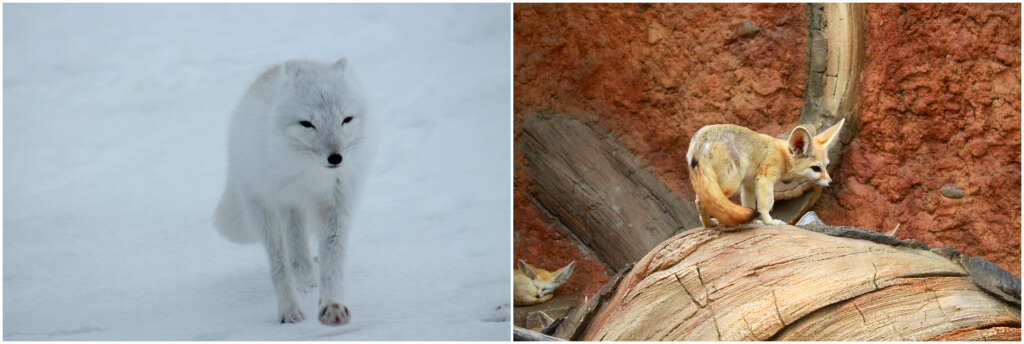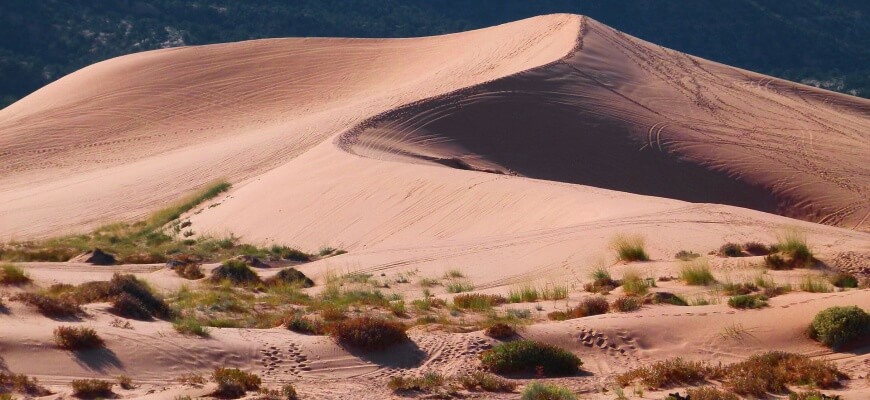During evolution, life has spread all around the world. This means that different species of plants and animals are inhabiting practically every part of the Earth with different climate conditions. For humans it is not such a problem to live even in extreme conditions. Our technology, for example air conditioning in summer and heating systems for winter, is all we need! But for animals and plants this is not the case and if they want to inhabit areas with better survival opportunities (e.g. less predators, more nutrients), they have to adapt to such conditions through evolutionary processes. In this article, I will present some examples of such adaptations for temperature regulation weather in cold or hot climate.
To regulate temperature, organisms went in different directions during their adaptational development. Some focused either on insulation materials, surface morphology, body shapes or behavioral strategy, others on microclimate creation.
- Insulation: The most famous example is the polar bear’s transparent fur which scatters incident light to a dark skin that heats up and air encapsulated between the hair prevents the loss of heat. On the other hand, black birds (e.g. ravens, ostriches) are found in hot deserts which is maybe not so logical on the first view. The secret is in their feather structure. The upper black feathers heat up much more than the surrounding air which creates a temperature gradient greater to the outer temperature than to the body temperature. Consequently, heat transfer occurs to the surrounding air and not to the air molecules in the under-layer of fine wooly down.
- Surface morphology is important to regulate light reflection. This is of great importance once you cannot move (or just very slowly), like plants. At high altitudes, plants often have bright hair on the surface of their leaves to reflect harmful UV light (e.g. Edelweiss, Leontopodium alpinum). In areas with many hours of scorching sun, plants have set the orientation of their structural parts in such a way that in the period of intense sun, the least surface possible is exposed to it. Spherical type geometry is also a solution for solar light density reduction on plant surfaces. Low angle incidence and multiple scattering, attenuation and reflection decrease effective light density.
- Animals developed different body shapes in order to better exploit physical laws of thermodynamics. Species in hot climates often have big ears, densely crisscrossed with veins, for efficient heat exchange. Surface to volume ratio also plays an important role. Bigger animals have an advantage over small ones because it takes more energy to heat up a big volume through a corresponding surface.

Fig. 2: Ear size is important for temperature regulation of related species (polar and desert fox) in different extremes.
- Behavioral strategies for temperature regulation among animals are numerous. The most known are basking behavior of reptiles and huddling of penguins. An interesting fact is that a solitary emperor penguin in an arctic storm could burn up 200g of fat per day to stay warm and alive while huddling penguins need only about 100g per day [1]. Another bird species is quite genius in its strategy. Australian brushturkey (Alectura lathami) utilizing heat from a decomposing organic matter. It constructs its nest from fallen leaves which eventually start to decompose and keep constant temperature of about 35°C, just perfect for egg hatching [2].
- Last but not least, temperature is often regulated via microclimatic conditions. In plant kingdom this means creating a relatively small space with preferable temperatures from the surroundings by the way of growing or grouping with other individuals (see Cover photo). For animals this is more relevant in shelter constructions. Common examples are construction and orientation of ant or termite mounds with extraordinary ventilation systems . Some birds specialized in “collective buildings” by woving their nests like weaver birds (Ploceidae) (Fig. 3). Prairie dogs and (Cynomys) and beavers (Castor) could be named master construction engineers for underground/ -water projects.
Last week I saw a nice saying on my shampoo, written in German: “Natur kennt keine Probleme, nur Lösungen”, meaning that nature does not know any problems, only solutions. It fits well to this article because nature has really found many optimal solutions for survival strategies of living organism all around the world. Can we learn something from that? Can we copy these ideas? Even if not, they are fascinating enough to respect nature and admire it.
References:
- [1] How Penguins are Adapted to Their Environment and Survive Cold Conditions – Science of the Cold
- [2] Australian brushturkey
- [3] Figure 1.3 Prof. dr. Helmut Tributsch





